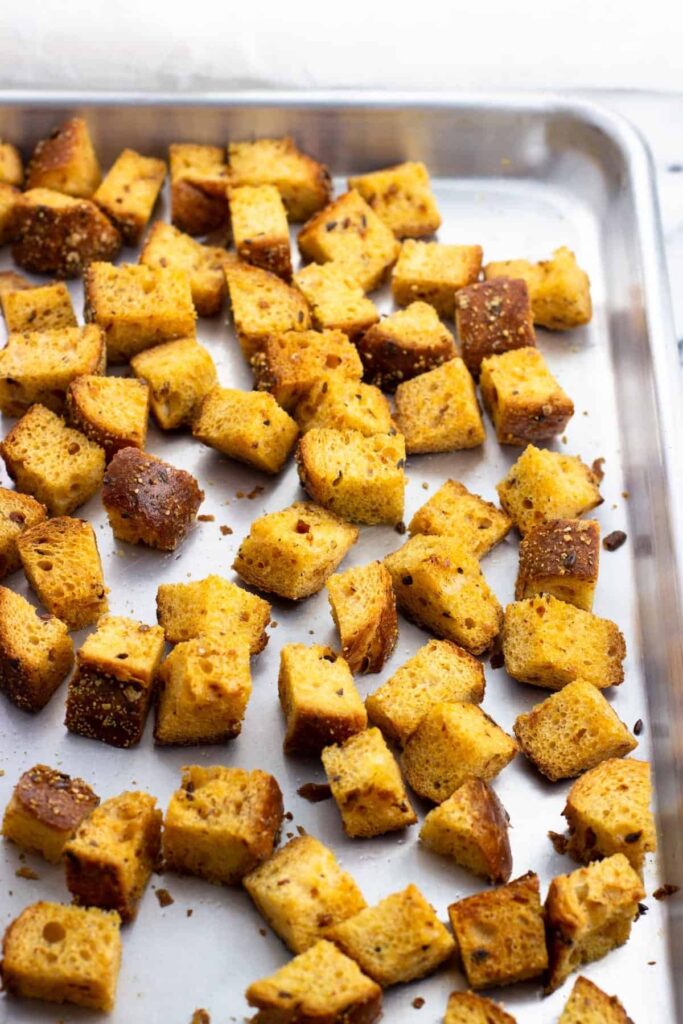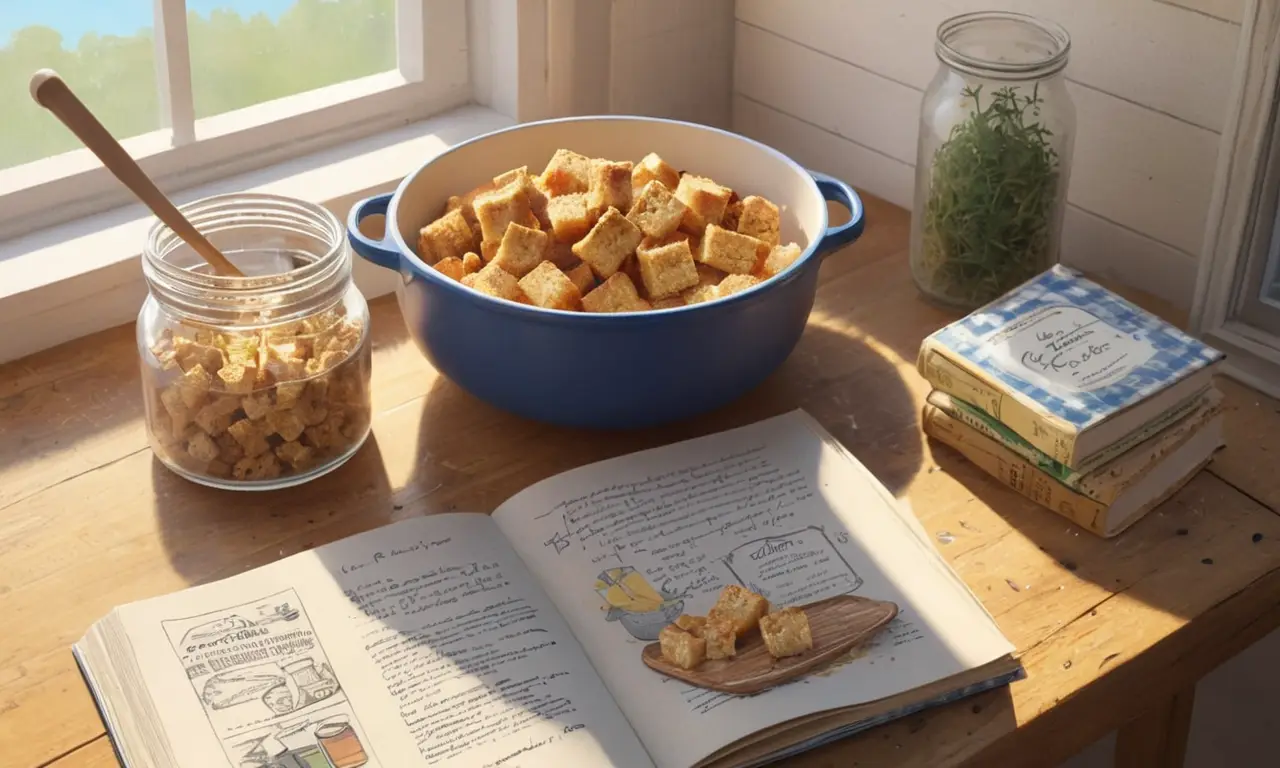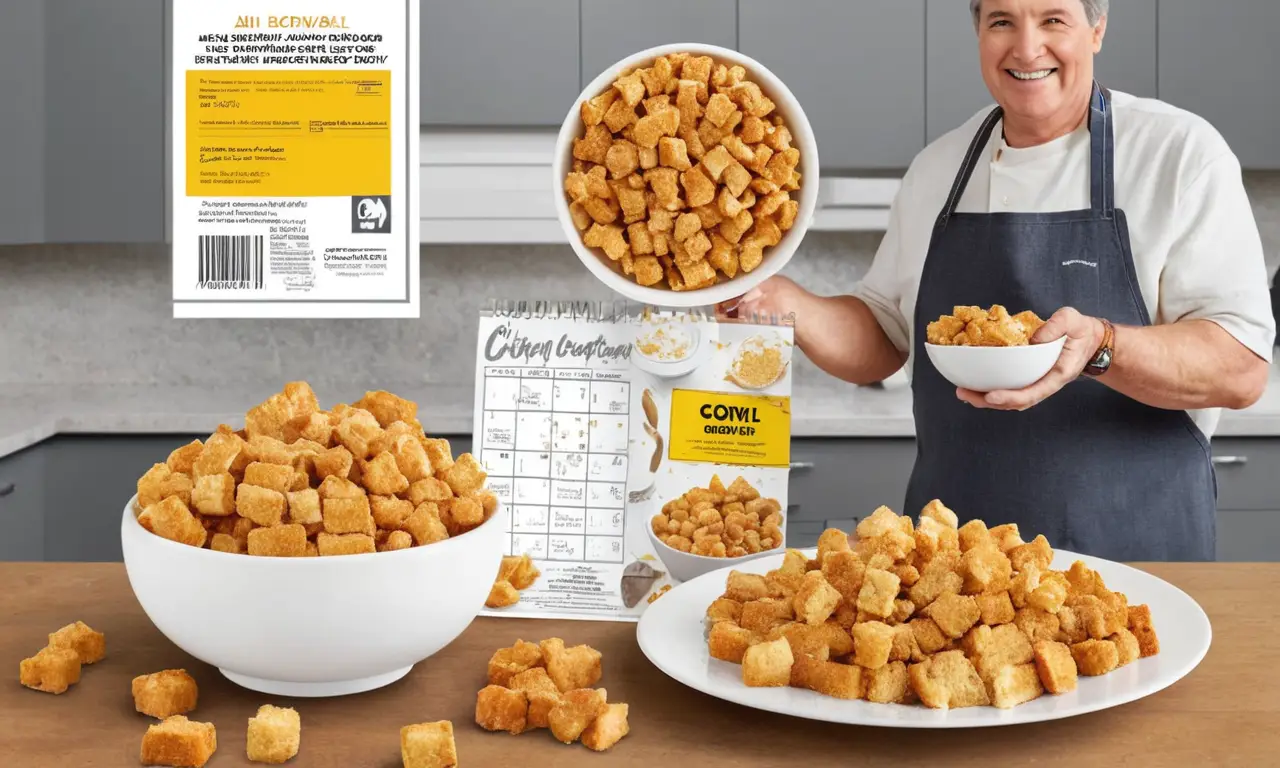
Croutons, those delightful crunchy bites of bread that add texture and flavor to salads and soups, are a kitchen staple. But like any food item, they have a shelf life and can eventually go stale. Knowing how to identify spoiled croutons and store them properly is essential for enjoying their crispy goodness. This article will guide you through the signs of stale croutons, best storage practices, and tips to keep your croutons fresh and flavorful for longer.
This comprehensive guide will delve into the telltale signs of stale croutons, explore optimal storage methods, shed light on their shelf life, and provide valuable tips to prevent them from going bad in the first place. By following these guidelines, you can ensure that your croutons remain a delightful addition to your culinary creations.
Signs of Stale Croutons
Identifying stale croutons is crucial to avoid consuming potentially unpleasant or even unsafe food. Several key indicators signal that your croutons have lost their freshness and crunch.
Color Changes
Fresh croutons typically boast a golden-brown hue, indicative of their toasted perfection. As they age, however, you might notice a shift in color. Stale croutons often appear paler, duller, or even slightly grayish. This discoloration stems from the oxidation process that occurs when bread is exposed to air over time.
Texture Transformation
The defining characteristic of fresh croutons is their satisfying crunch. When they go stale, their texture undergoes a noticeable transformation. Stale croutons become soft, mushy, and lack their original crispness. This change in texture results from the absorption of moisture from the surrounding environment, causing the bread to lose its structural integrity.
Odor Alterations
While fresh croutons possess a subtle, toasted aroma, stale ones often emit an off-putting odor. This unpleasant smell can range from musty to rancid and signals that the croutons have begun to decompose. The presence of mold or bacteria contributes to this undesirable scent.
How to Store Croutons

Proper storage is paramount to preserving the freshness and crunch of your croutons. By following these simple guidelines, you can significantly extend their shelf life and enjoy them at their best.
Airtight Containers
The key to preventing stale croutons lies in minimizing their exposure to air. Transfer leftover croutons to an airtight container immediately after use. This will create a barrier that prevents moisture from entering and oxygen from oxidizing the bread cubes. Glass or plastic containers with tight-fitting lids are ideal for this purpose.
Room Temperature Storage
Contrary to popular belief, storing croutons in the refrigerator is not recommended. The cold temperature can cause condensation to form inside the container, leading to a soggy texture. Instead, store your croutons at room temperature in a cool, dry place away from direct sunlight or heat sources.
Separate from Other Foods
To prevent cross-contamination and maintain freshness, store your croutons separately from other foods, especially those with strong odors. The absorption of unwanted flavors can compromise the taste of your croutons.
Crouton Shelf Life
While properly stored croutons can retain their crispness for several weeks, their shelf life is ultimately finite.
Optimal Consumption Window
For optimal crunch and flavor, it’s best to consume croutons within 2-3 weeks of purchase or preparation. During this timeframe, they will maintain their desired texture and taste.
Signs of Expiration
As time passes, even when stored correctly, croutons may begin to show signs of staleness. Pay attention to any color changes, texture alterations, or odor variations that indicate they are nearing the end of their shelf life.
Tips for Preventing Stale Croutons

Taking proactive measures can significantly extend the freshness and crunch of your croutons.
Homemade vs. Store-Bought
Homemade croutons tend to have a shorter shelf life compared to store-bought varieties, which often contain preservatives that prolong their freshness. If you’re looking for longer-lasting croutons, consider purchasing them pre-made.
Baking Technique
When baking your own croutons, ensure they are thoroughly dried to prevent moisture retention. Bake them at a higher temperature (around 350°F) for a shorter duration (10-15 minutes) to achieve optimal crispness.
Conclusion
Knowing how to identify stale do croutons go bad, store them properly, and extend their shelf life is essential for enjoying these crunchy delights to the fullest. By following the guidelines outlined in this article, you can ensure that your croutons remain a flavorful and satisfying addition to your culinary creations. Remember to check for signs of staleness, store them in airtight containers at room temperature, and consider making homemade croutons with proper baking techniques for maximum freshness.
